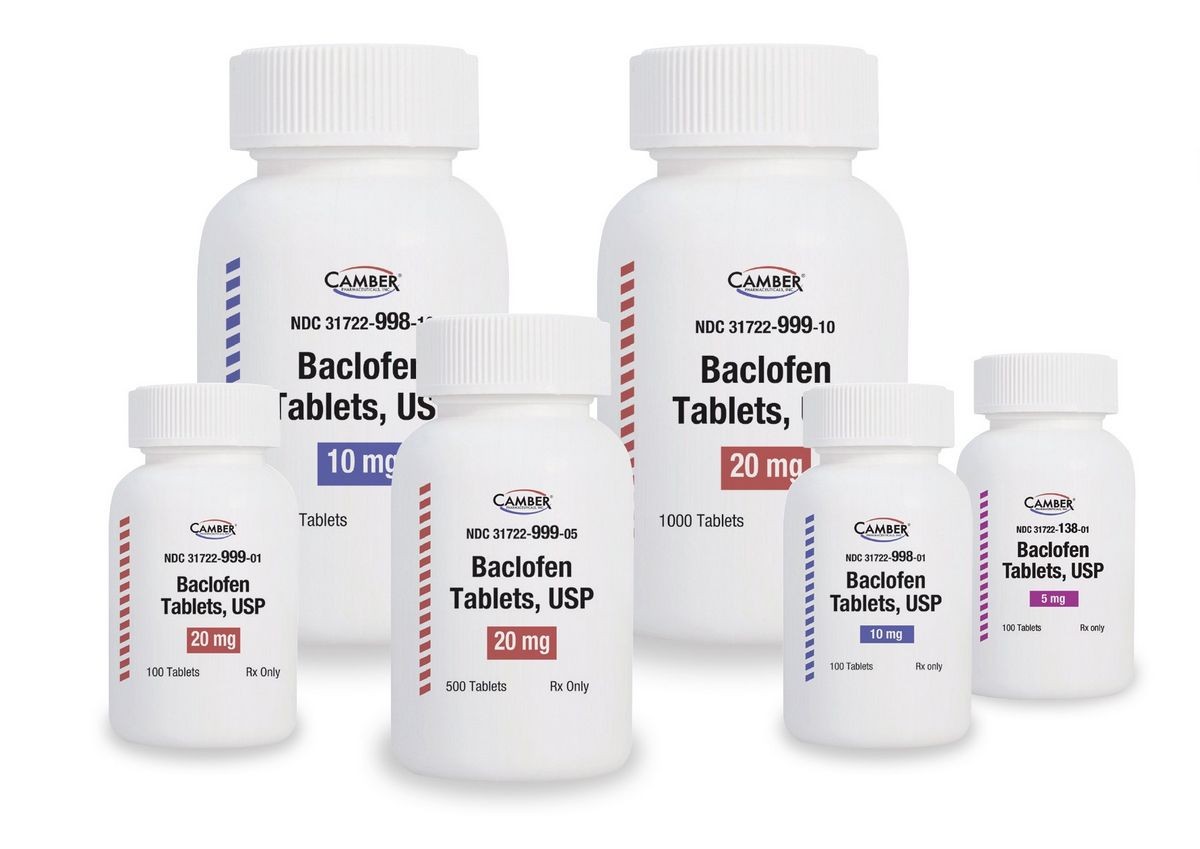
Contents
- 1 Gabapentin vs. Baclofen
- 1.0.1 What are the side effects of gabapentin and baclofen?
- 1.0.2 What is the dosage of gabapentin vs. baclofen?
- 1.0.3 What drugs interact with gabapentin and baclofen?
- 1.0.4 Are gabapentin and baclofen safe during pregnancy or breastfeeding?
- 1.0.5 Summary
Gabapentin vs. Baclofen
Gabapentin is an anti-seizure drug that prevents seizures and treats post-herpetic neuralgia. It is also used off-label for anxiety, alcohol withdrawal, cocaine withdrawal, hiccups, restless leg syndrome, hyperhidrosis, headaches, diabetic neuropathy, hot flashes, and fibromyalgia.
Baclofen is a skeletal muscle relaxer that acts similarly to the neurotransmitter gamma-aminobutyric acid (GABA). It blocks nerve activity in the brain that controls the contraction and relaxation of skeletal muscle. Baclofen is used to treat skeletal muscle spasms, muscle clonus, rigidity, and pain caused by multiple sclerosis. It is also used for severe spasticity when injected into the spinal cord.
QUESTION
What are the side effects of gabapentin and baclofen?
Gabapentin side effects
The most common side effects of gabapentin are:
- Dizziness
- Sleepiness
- Ataxia
- Fatigue
- Drowsiness
- Fluid retention (edema)
- Hostility
- Nausea
- Vomiting
- Difficulty speaking
- Jerky movements
- Unusual eye movements
- Double vision
- Tremors
- Memory loss
- Unsteadiness
Other adverse effects and serious side effects associated with gabapentin include:
- Weight gain
- Joint pain
- Motion sickness
- Blurred vision
- Viral infection
Antiepileptic medications have been associated with an increased risk of suicidal thinking and behavior. Patients should be closely observed for clinical worsening, suicidal thoughts, or unusual changes in behavior.
Baclofen side effects
Common side effects of baclofen are:
- Drowsiness
- Weakness
- Dizziness
- Headache
- Seizures
- Nausea
- Vomiting
- Low blood pressure
- Constipation
- Confusion
- Respiratory depression
- Inability to sleep
- Increased urinary frequency or urinary retention
Abrupt discontinuation of baclofen may cause seizures, hallucinations, high fever, rebound spasticity, muscle rigidity, and rhabdomyolysis.
What is the dosage of gabapentin vs. baclofen?
Gabapentin dosage
Dosage for Postherpetic Neuralgia
- In adults, gabapentin may be initiated on Day 1 as a single 300 mg dose, on Day 2 as 600 mg/day (300 mg two times a day), and on Day 3 as 900 mg/day (300 mg three times a day).
Dosage for Epilepsy with Partial Onset Seizures
Patients 12 Years Of Age And Above
- The starting dose is 300 mg three times a day. The recommended maintenance dose is 300 mg to 600 mg three times a day. Dosages up to 2400 mg/day have been well tolerated in long-term clinical studies.
Pediatric Patients Age 3 To 11 Years
- The starting dose range is 10 mg/kg/day to 15 mg/kg/day, given in three divided doses, and the recommended maintenance dose reached by upward titration over a period of approximately 3 days.
Dosage Adjustment in Patients with Renal Impairment
- Dosage adjustment in patients 12 years of age and older with renal impairment or undergoing hemodialysis varies depending on the person’s creatinine clearance.
- The use of gabapentin in patients less than 12 years of age with compromised renal function has not been studied.
Dosage in Elderly
- Because elderly patients are more likely to have decreased renal function, dose selection should be cautious, and dose adjustment should be based on creatinine clearance values.
Administration Information
- Administer gabapentin orally with or without food.
- Gabapentin capsules should be swallowed whole with water.
- If dividing the scored tablet, take the unused half-tablet as the next dose. Unused half-tablets not used within 28 days of dividing should be discarded.
- If reducing, discontinuing, or substituting gabapentin with another medication, do so gradually over a minimum of 1 week (a longer period may be needed at the discretion of the prescriber).
Baclofen dosage
The optimal dosage of baclofen should be determined on an individual basis. Start with a low dosage and increase gradually until the desired effect is achieved (usually between 40-80 mg daily).
Follow this dosage titration schedule:
| 5 mg t.i.d. for 3 days |
| 10 mg t.i.d. for 3 days |
| 15 mg t.i.d. for 3 days |
| 20 mg t.i.d. for 3 days |
Further increases may be required, but the daily dose should not exceed a maximum of 80 mg daily (20 mg q.i.d.).
Use the lowest dose that achieves the desired response. If there are no noticeable benefits after a reasonable trial period, slowly withdraw from the drug.
What drugs interact with gabapentin and baclofen?
Gabapentin interactions
- Antacids reduce the concentration of gabapentin in the blood. Administer gabapentin 2 hours or more after taking antacids.
- Morphine significantly increases blood concentrations of gabapentin and may increase central nervous system-related adverse events.
Baclofen interactions
- Using baclofen with other drugs that depress nerve function may further reduce brain function.
- Using baclofen with tricyclic antidepressants may cause muscle weakness.
- Using baclofen with monoamine oxidase inhibitors can result in greater depression of brain function and low blood pressure.
- Because baclofen can increase blood sugar, antidiabetic drug doses may need adjustment when baclofen is started.
Are gabapentin and baclofen safe during pregnancy or breastfeeding?
Gabapentin warnings
The safety of gabapentin during pregnancy is unknown. Use only if benefits outweigh the unknown risk to the fetus.
Baclofen warnings
The use of baclofen by pregnant women has not been evaluated. Baclofen can be detected in the breast milk of mothers taking oral baclofen. No information is available on the presence of baclofen in the breast milk of mothers receiving baclofen intrathecally.
By clicking Submit, I agree to the MedicineNet’s Terms & Conditions & Privacy Policy and understand that I may opt out of MedicineNet’s subscriptions at any time.
Summary
Gabapentin and baclofen are used off-label to treat nerve pain (neuralgia). Gabapentin also treats nerve pain from shingles and is an anti-seizure medication. Baclofen is a muscle relaxant used to treat pain caused by disorders such as multiple sclerosis. It is also used for severe spasticity when injected into the spinal cord.


